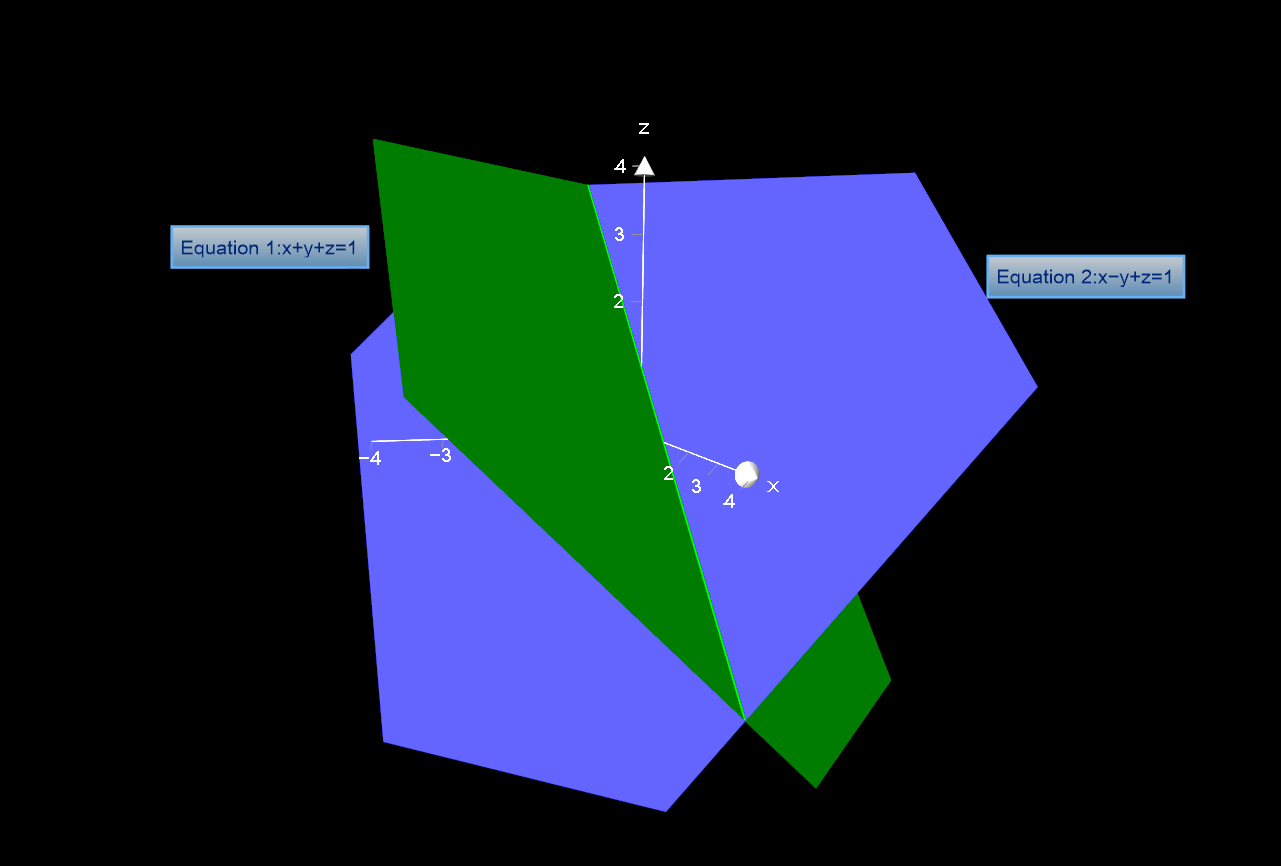Are the planes #x+y+z=1# , #x-y+z=1# parallel, perpendicular, or neither? If neither, what is the angle between them?
1 Answer
Explanation:
We can find the angle between two planes, by finding the angle between the normals to the plane:
When given the equation of a plane in Cartesian form:
The normal vector to the plane is:
Let:
Then:
We can find the angle between these normals using the Dot Product:
If the planes were perpendicular, the the angle between them would be
If the planes were parallel, the the angle between them would be
Plot:


